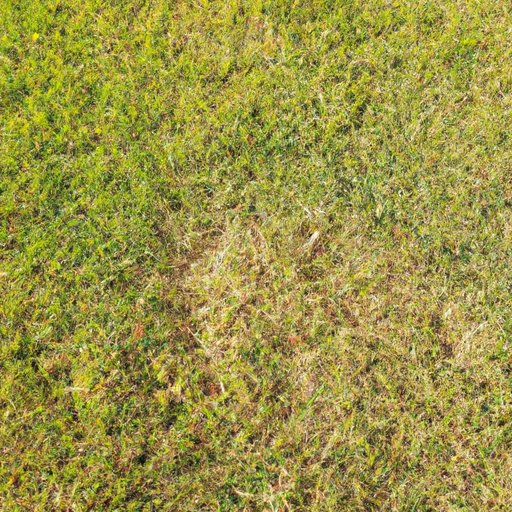Introduction
Dethatching is an essential part of lawn care that helps keep your grass healthy and attractive. Dethatching removes the layer of dead grass and debris from your lawn, allowing air, water, and nutrients to reach the soil. But when is the best time to dethatch your lawn? In this article, we explore the benefits of dethatching in different seasons and examine which season offers the best conditions for dethatching. We also provide a guide to when and how often you should dethatch your lawn for optimal results.
Analyzing the Benefits of Dethatching in Different Seasons
Dethatching at the right time of year can have major benefits for your lawn. Let’s take a look at the advantages of dethatching in each season:
Spring
In the springtime, dethatching helps remove any dead grass or weeds that were left over from the wintertime. This allows more sunlight to reach the soil, encouraging new growth and helping to prevent weed infestations. Dethatching in the spring also gives your grass plenty of time to recover before the summer months.
Summer
Dethatching in the summer can help reduce the amount of moisture that gets trapped in the soil, preventing fungus and disease. It can also help loosen compacted soil and improve drainage, allowing the roots of your grass to get the oxygen they need to thrive.
Fall
In the fall, dethatching helps prepare your lawn for winter by removing any debris that could trap moisture over the cold months. It also encourages new growth, which will help protect the roots of your grass against freezing temperatures.
Winter
Dethatching in the winter may not be necessary, as most grasses go dormant during this time. However, if you live in a mild climate where your grass remains green throughout the winter, dethatching can help keep it healthy and strong.

Examining the Best Time to Dethatch Your Lawn Based on Weather Conditions
The best time to dethatch your lawn depends on several factors, including temperature, rainfall, and humidity. Here’s what you should consider when deciding when to dethatch:
Temperature
When dethatching, it’s best to choose a day when the temperature is between 60 and 85 degrees Fahrenheit. If the temperature is too cold or too hot, it can damage the roots of your grass.
Rainfall
It’s best to avoid dethatching after a heavy rain, as the soil may be too wet and cause compaction. If you must dethatch after a rain, wait until the soil has had a chance to dry out.
Humidity
High humidity can make it difficult for the soil to dry out after dethatching, so try to choose a day when the humidity is low.

Seasonal Timing for Optimal Dethatching Results
Now that you know the factors to consider when choosing the best time to dethatch your lawn, let’s take a look at the optimal timing for each season:
Spring
For the best results, dethatch your lawn in late March or early April. This will give your grass plenty of time to recover before the summer months.
Summer
If you live in a warm climate, dethatch your lawn in late May or early June. This will give your grass enough time to recover before the hot summer months.
Fall
For optimal results, dethatch your lawn in late September or early October. This will give your grass enough time to recover before the winter months.
Winter
If you live in a mild climate where your grass remains green throughout the winter, dethatch your lawn in late November or early December. This will give your grass enough time to recover before the cold weather sets in.

Identifying the Most Effective Time of Year to Dethatch a Lawn
Now that you know the optimal timing for dethatching in each season, you need to decide which season is best for your particular lawn. Here are some factors to consider when making your decision:
Factors to Consider
- Type of grass
- Climate
- Soil type
- Amount of traffic on the lawn
Benefits of Early and Late Season Dethatching
Early and late season dethatching can offer a number of benefits, such as:
- Allowing more sunlight to reach the soil
- Reducing the amount of moisture that gets trapped in the soil
- Encouraging new growth
- Helping to prevent weed infestations
- Preparing your lawn for winter
A Guide to When and How Often You Should Dethatch Your Lawn
Once you’ve identified the best time of year to dethatch your lawn, it’s important to know when and how often to do it. Here’s a guide to help you get started:
Frequency of Dethatching
How often you should dethatch your lawn depends on the type of grass you have. For cool-season grasses, like fescue and bluegrass, dethatching once every two to three years is recommended. For warm-season grasses, like bermuda and zoysia, dethatching once a year is ideal.
Tools Needed
To dethatch your lawn, you’ll need a rake, a dethatching machine, or a power rake. A power rake is the most efficient option, as it can cover a large area quickly.
Safety Precautions
When dethatching, it’s important to take safety precautions to protect yourself and others. Wear protective clothing, such as gloves and goggles, and always follow the manufacturer’s instructions when operating a dethatching machine.
Conclusion
Dethatching is an important part of lawn care that can help keep your grass healthy and attractive. By understanding the benefits of dethatching in different seasons and examining the best time to dethatch based on weather conditions, you can ensure that you get the best results. Remember to take safety precautions when dethatching, and follow the manufacturer’s instructions when using a dethatching machine. With a little bit of knowledge and preparation, you can enjoy a beautiful, healthy lawn all year round.


